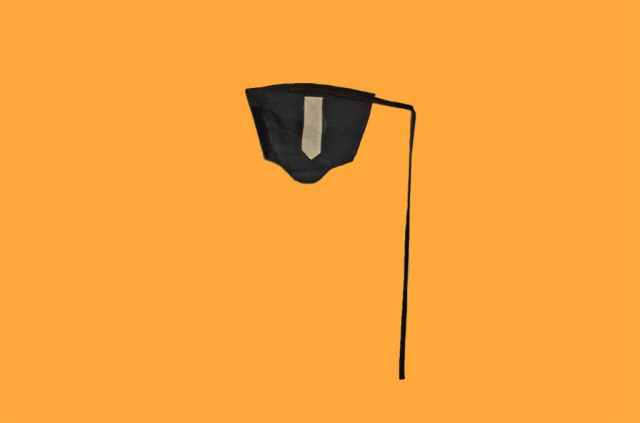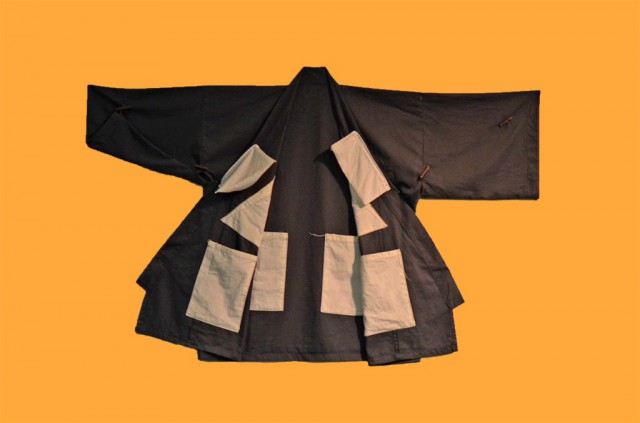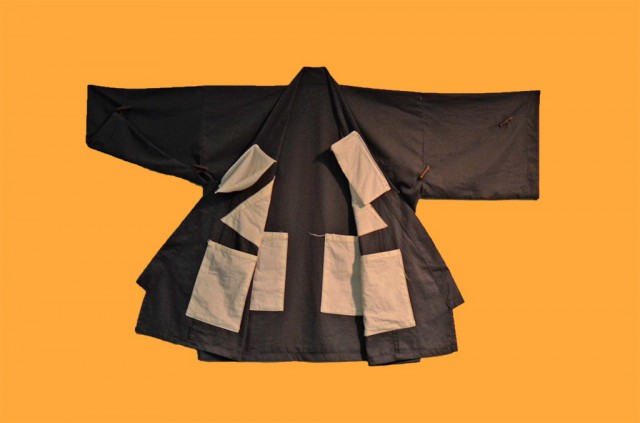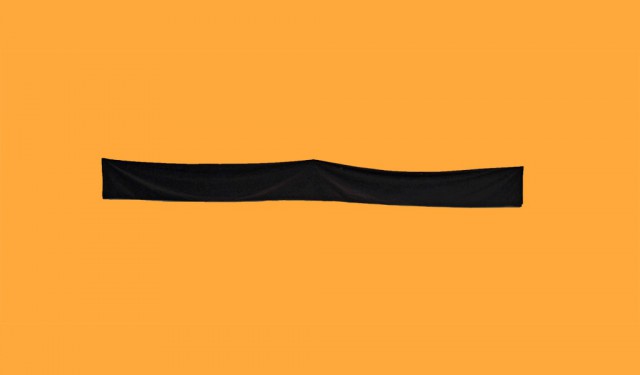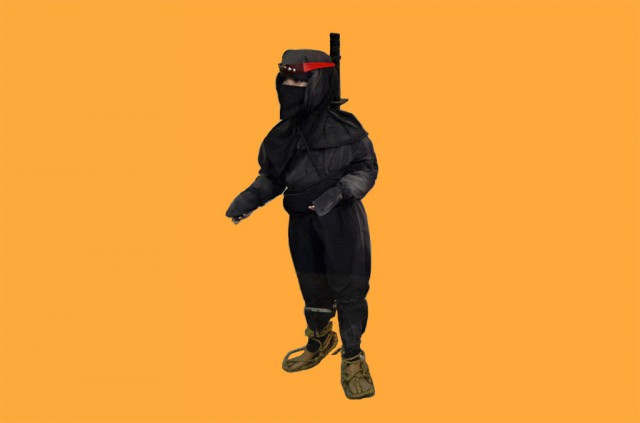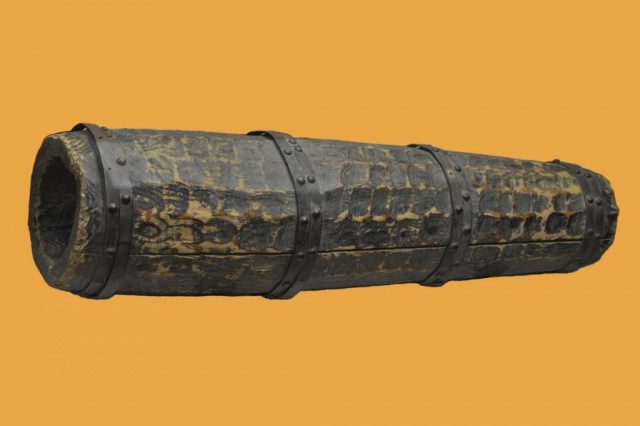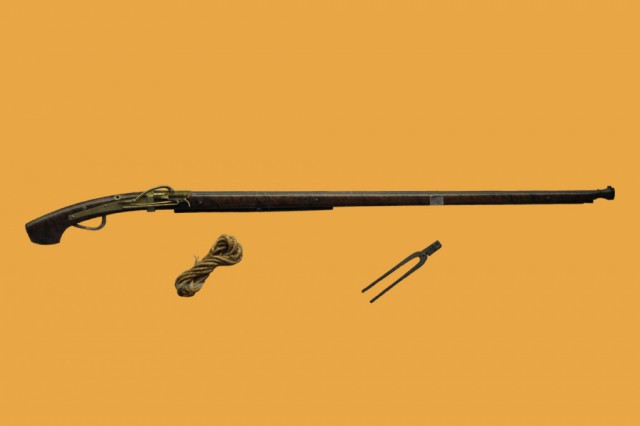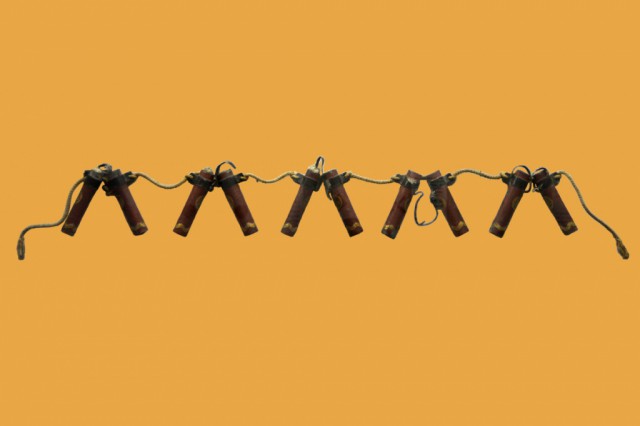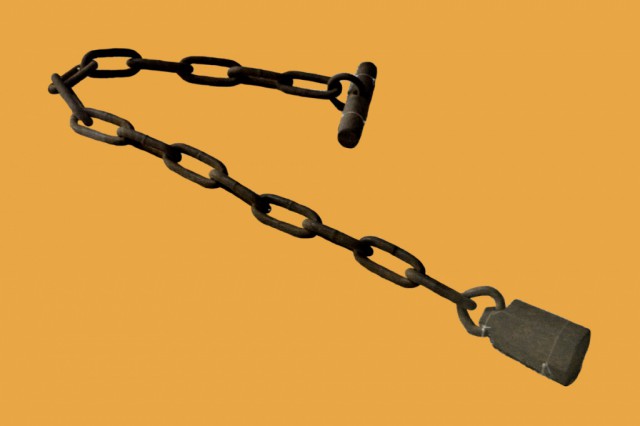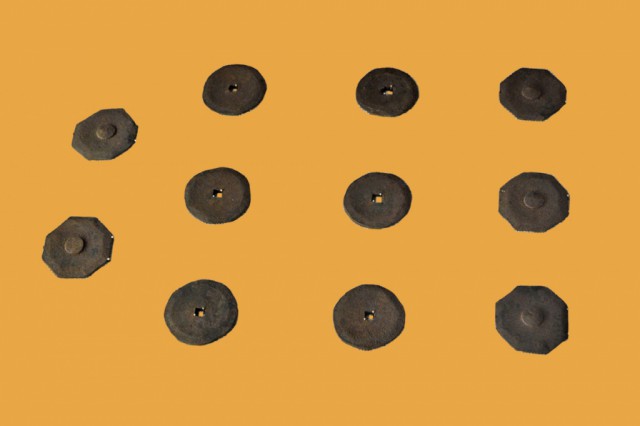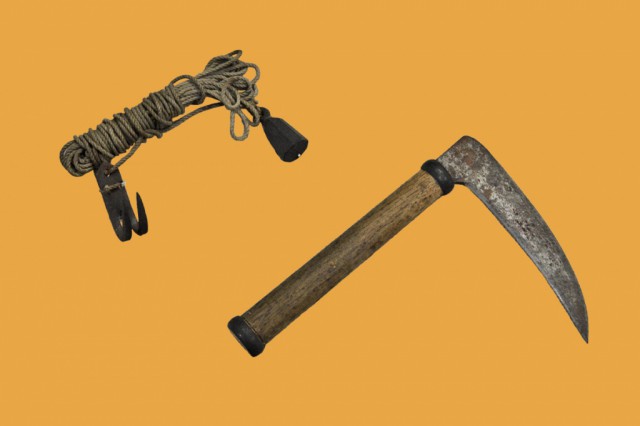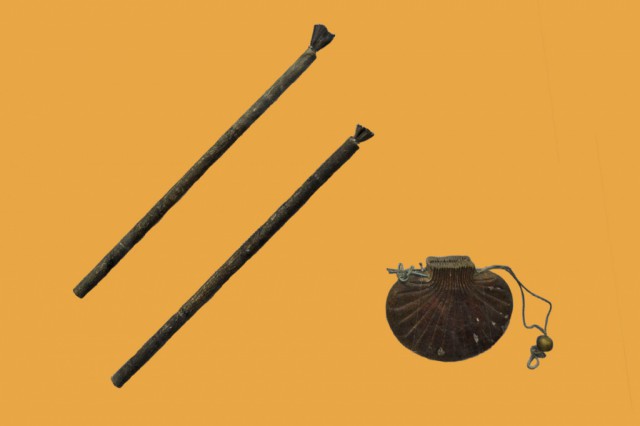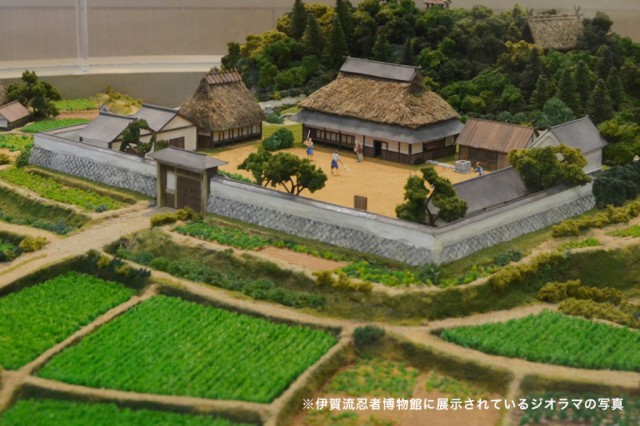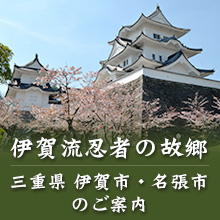Straight shaped shurikens or thin, long blades were hidden on the outer arms, also serving as protection.
Uwagoromo (Upper garment)
A bronze or iron mirror was put in the front left and right parts to protect the heart. Around the lower back on the outside were two pockets. Items could be put in or taken out from either side of the hakama.
Uwagoromo-Eri (Upper garment-lapel)
Zukin (hood)
A navy blue cloth of 24 to 25cm in width and two meters long. As well as for hiding the face, it could be used for carrying the wounded or for climbing walls.
Shinobi shozoku (ninja’s traditional outfit)
The ninja operated chiefly in the night-time and wore a set of shinobi shozoku for their ability to blend in with the night shadows. Although today’s common notion is that the ninja wore a black outfit, a black one is rather conspicuous because its outline becomes apparent on a night which it is not totally dark. In reality, the ninja wore working clothes dyed navy blue worn by farmers in the Iga and Koka areas. The most common and unsuspected costume at that time was farmer’s work clothes. If a ninja was in work clothes, he could naturally carry a sickle or other farm implements that could be used as a weapon. In addition, work clothes were light and gave the ninja freedom of movement. Other merits are that they acted as snake and insect repellent and served as filters to obtain drinking water.
What is a Ninja?
Iga City
The Root of NINJA
"NINJA" and "NINJUTSU"
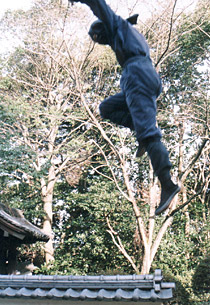
are internationally-known words that convey an image of Japan all over the world.
You see them all the time in the movies, on TV, and even in cartoons.
They seem to cut through the air, attack, and then disappear without a trace… but do you know the reality behind these mysterious warriors who display such prowess in the martial arts? Do you know the facts behind it all?
Who are the Ninjas? What is Ninjutsu?
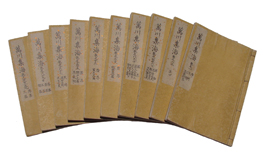
During the feudal period of Japan’s history, civil war was rife. In this time, the Ninja were principally agents of espionage and stealth hired by warring factions to gain intelligence about the activities of their enemies.
However, the Ninja were also called upon to disrupt and even assassinate enemies from time to time. A "Ninja" was the name applied to those who used the martial arts of Ninjutsu to achieve these aims.
The art of Ninjutsu places its emphasis not upon the force of arms, but upon stealth and using intellectual solutions to combat. One area of Ninjutsu called upon divination, psychology and parapsychology to manipulate the enemy’s perception, while others called upon disciplines such as astrology and medical horticulture to advance their standards of living.
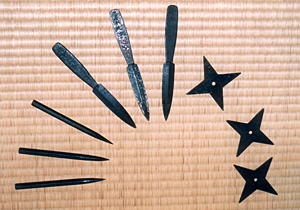
The art of Ninjutsu was far from limited to combat. Among the various schools of Ninjutsu that were developed throughout history, only two were ever considered to be leading in their field: Iga-ryu and Koga-ryu. The Koga-ryu, or Koga style of Ninjutsu was developed in the Koga region of the Shiga prefecture, while the Iga-ryu or Iga style was developed right here in Iga city, Mie prefecture.
Does the Origin of Ninjutsu date back to the Feudal period of Japanese history?
Actually, no it doesn’t. The history of Ninjutsu can be traced back up to many years before 500AD, to the ancient times of the Indian sub-continent. The culture of Ninjutsu was said to have existed as far back as 4000 BC, where ancient Indian culture exported its brand of spirituality into continental China. From here it was introduced into Japan through the Korean peninsula around the time of the 6th Century, where it was refined and developed into the military discipline that is known today.
Iga-goe(Crossing Iga)
TOKUGAWA Ieyasu experienced four disasters in his life, among which, according to him, Crossing Iga was the most difficult. When he learned his predecessor OTA Nobunaga committed suicide because of rebellion, he was on his way home with only 30 odd allegiants in civilian clothes, although they were all chief retainers. Ieyasu said, “I should kill the rebel, but we are too small a party to fight against the rebel force. It may be better for me to remain in dignity by committing suicide by harakiri.” A follower then made a proposal, however, “Let’s return home, raise forces, and send a punitive expedition against the rebel. That is our obligation to Nobunaga.” So, they discussed how they would be able to escape.
Although they were annoyed by bandits and riots that usually accompanied rebellion, they could somehow come to Iga through a number of dangerous points with the aid of several local lords. After they entered Iga, local warriors of Koka and Iga guided them to Ise. Thereafter, they returned home on ships. Ieyasu later hired two hundred Koka and Iga men and appointed HATTORI Hanzo to the head of the group, which is the beginning of the Iga section of Tokugawa shogunate.
Tensho Iga-no-ran (Iga rebellion of Tensho)
In the warring country period, the Iga country was divided and ruled by local lords, in which each family formed a party for alignment.
The independent rule of Iga unbowed before authority, had been incurring the displeasure of OTA Nobunaga, then unifier of Japan. In 1579, Nobunaga’s rule of Iga began when his son raised an army against Iga. Thus a full-scale war between the unifier and a country erupted.
Nobukatsu, Nobunaga’s son, attacked Iga from three directions. Local lords of Iga learned of Nobukatsu’s movements early, so they could counter Nobukatsu’s army, preparing at several bases. The victor in this battle was the Iga force, which made the most of the geography of the place and was good at the use of gunpowder. The Ota force withdrew. This is the first Iga rebellion.
Nobunaga, in a fury, gathered feudal lords and announced his plan to attack Iga in 1581. Leading nearly 50,000 soldiers, equal to a haf of the population of the Iga country at that time, Nobunaga invaded Iga. The Iga force was only several thousands and endured a month. However, according to a record, half the population of Iga was wiped out, all the lands were scorched, and all buildings were destroyed.
The curtain fell on the second Iga rebellion as a deep historic tragedy. The people and warriors of the Iga country were united and bravely affronted the dictator of the time, behind which was of course the ninja’s activity.
odutsu (canon)
The ninja developed a variety of guns such as canons, long guns, and wooden guns and used them effectively. Specifically, wooden guns, in which iron chips and gravel were charged and shot, were suitable for killing or injuring many enemy fighters with a single shot. Moreover, wooden guns were advantageous in that they were simple and inexpensive to construct and easy to carry, so the ninja did not mind if they would break.
Umebi (mine)
The basic ingredients for gunpowder were readily available in iga. Mugwort, moxa, camphor and horse dung were used to make the umebi, a kind of mine.
Teppou (gun)
Ninjas were originally good at handling gunpowder, so they knew how to use guns very well. They were invaluable help for feudal loads during war times.
Fundo tsubute (throwing weight)
Aside from throwing, the ninja used the fundo tsubute for pulling nails, utilizing the edge to raise the nail head and the center hole to lift the nail.
Sojin-gama (double-edged sickle)
The sojin-gama could cut not only towards the user but also the other way. The blade is 12cm long, with a folding handle 15cm long. Since it was a farming tool, it did not raise suspicions if discovered.
Fukiya-dutsu(blowpipe)
The Fukiya-zutsu was used mainly in assassinations, with poison applied on the tip of the dart. For the blowpipe, ninjas used a flute, the inside of which was lined with paper to block the holes.
Iga ninjutsu(the art of the Iga ninja)
It is said that there were 25 ninja schools, of which the Iga and Koka schools were out and away the best. As Iga and Koka are adjacent, their art and skills were similar, although Iga was better in sorcery than Koka.
The reason for the development of sorcery in Iga was that since ancient times there were many exiles from the capital to the Iga basin. They had been in charge of practicing sorcery at the ancient imperial court or good at various arts such as magic and acrobatics. It is believed that they introduced the art of sorcery establishing permanent residence.
Because it was required and evolved in times of war, the art of the ninja included martial arts, stratagems, and subversive activities. Nonetheless, those which were not directly relevant to warfare accounted for a large part of their art, including psychology, pharmacy, medical, astronomy, sorcery, and divination. The art of the ninja was indeed a great collection of wisdom and skills for survival.
Yuinawa (knotted rope)
This was also called “Ketsujo”. Being hung under the eaves, the yuinawa served as a cipher. The shape and number of knots expressed letters and sentences.
Dentatsuhouho (Communications)
In ancient times, information was carried basically by person to person, and therefore the information transmission speed was the same as walking speed. If the speed was important, ancient people used signals to send information. The media were sounds such as bells, drums, and gongs, beacon fire, and flags, In the case of the ninja, priority was given to communicating information to coagents unknown to third parties without failure rather than speed. For this reason, the ninja enciphered information. Primary ciphering techniques included the arrangement of pebbles included the arrangement of pebbles, broken twigs, and color combinations of scattered rice grains dyed blue, yellow, red, black, and purple, as well as knotted ropes hung under the eaves expressing “Come later” or “Heading north.”
Gunpowder/match techniques
The ninja was good at dealing with gunpowder. It is said that before gunpowder and guns were introduced by Europeans, immigrants from China produced gunpowder in the Koka area.
The technique to handle gunpowder rapidly improved in the Iga and Koka areas because gunpowder ingredients, such as moxa, camphor, and horse dung were readily available there.
There were many knowledgeable immigrants, too. Whereas a gunpowder ingredient, saltpeter was not available except by import until the warring country period, the ninja could get it secretly from aged soil found under the porch of shrine.
The snipers who attempted to shoot ODA Nobunaga, one of the unifiers of Japan, although they were later executed, were master gunners of Koka and Iga. Establishing several gunnery schools, the ninja played an active role as an artillery force during the latter half of the Edo period.
